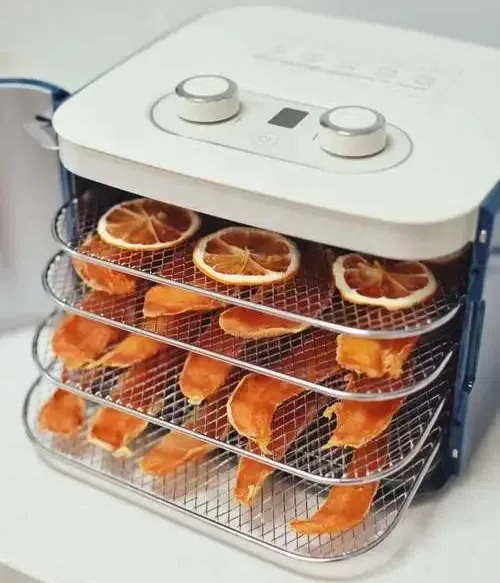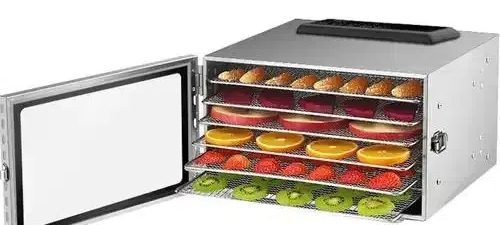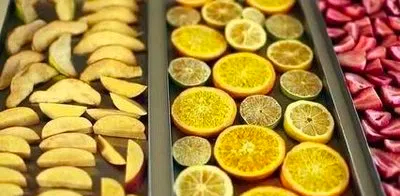
Content Menu
● Introduction
● Understanding Food Dryers
● How Food Dryers Work
● Benefits of Using Food Dryers
● Choosing the Right Food Dryer
● Popular Models
● How to Use a Food Dryer Effectively
● Common Mistakes to Avoid
● Maintenance and Care for Food Dryers
● Conclusion
● Frequently Asked Questions
>> 1. What types of food can be dried using a food dryer?
>> 2. How long does it take to dry food in a food dryer?
>> 3. Can I dry meat in a food dryer?
>> 4. What is the best temperature for drying fruits?
>> 5. How do I clean my food dryer properly?
Introduction
Food preservation is a crucial aspect of maintaining food quality and safety. Among various methods, drying food has gained popularity due to its effectiveness in extending shelf life while retaining nutritional value. Food dryers, including dehydrators and heat pump dryers, play a significant role in this process, offering a convenient way to preserve fruits, vegetables, and even meats.

Understanding Food Dryers
Food dryers are appliances designed to remove moisture from food, inhibiting the growth of bacteria, yeasts, and molds. There are several types of food dryers, including traditional dehydrators and more advanced heat pump dryers.
How Food Dryers Work
Food dryers operate by circulating warm air around the food, gradually evaporating moisture. This process can vary in temperature and duration depending on the type of food being dried. Heat pump dryers, for instance, utilize a heat exchange system that is energy-efficient and effective in maintaining consistent temperatures.
Benefits of Using Food Dryers
Using food dryers offers numerous benefits:
1. Nutritional Preservation: Drying food helps retain vitamins and minerals that can be lost during other preservation methods, such as canning or freezing.
2. Cost-Effectiveness: By drying surplus fruits and vegetables, you can reduce food waste and save money on groceries.
3. Convenience: Dried foods are lightweight, easy to store, and can be rehydrated quickly for use in various recipes.
Choosing the Right Food Dryer
When selecting a food dryer, consider the following features:
1. Capacity: Depending on your needs, choose a model that can handle the volume of food you plan to dry.
2. Temperature Control: Look for dryers with adjustable temperature settings to accommodate different types of food.
3. Energy Efficiency: Opt for models that consume less power, especially if you plan to use them frequently.

Popular Models
Some of the best food dryers on the market include the Magic Mill Food Dehydrator and the COSORI Food Dehydrator, both known for their efficiency and user-friendly features.
How to Use a Food Dryer Effectively
To maximize the benefits of your food dryer, follow these steps:
1. Preparation: Wash and slice fruits and vegetables evenly to ensure uniform drying.
2. Drying Process: Arrange the food in a single layer on the trays, avoiding overcrowding.
3. Monitoring: Check the food periodically to prevent over-drying, which can lead to loss of flavor and texture.
Common Mistakes to Avoid
1. Not pre-treating fruits like apples or bananas to prevent browning.
2. Overloading the dryer, which can lead to uneven drying.
Maintenance and Care for Food Dryers
Proper maintenance is essential for the longevity of your food dryer:
1. Cleaning: Regularly clean the trays and interior with warm, soapy water to prevent residue buildup.
2. Troubleshooting: If your dryer is not functioning properly, check for blockages in the air vents or ensure that the temperature settings are correct.
Conclusion
Food dryers are invaluable tools for anyone interested in food preservation. They not only help reduce waste but also allow you to enjoy seasonal fruits and vegetables year-round. By understanding how to choose and use a food dryer effectively, you can enhance your culinary repertoire and contribute to a more sustainable lifestyle.

Frequently Asked Questions
1. What types of food can be dried using a food dryer?
You can dry a variety of foods, including fruits, vegetables, herbs, and meats.
2. How long does it take to dry food in a food dryer?
Drying times vary based on the type of food and thickness of slices, typically ranging from 4 to 12 hours.
3. Can I dry meat in a food dryer?
Yes, many food dryers are suitable for making jerky, but ensure you follow safe preparation guidelines.
4. What is the best temperature for drying fruits?
Most fruits dry best at temperatures between 135°F to 145°F (57°C to 63°C).
5. How do I clean my food dryer properly?
Disassemble the dryer and wash the trays and interior with warm, soapy water, then rinse and dry thoroughly before reassembling.












